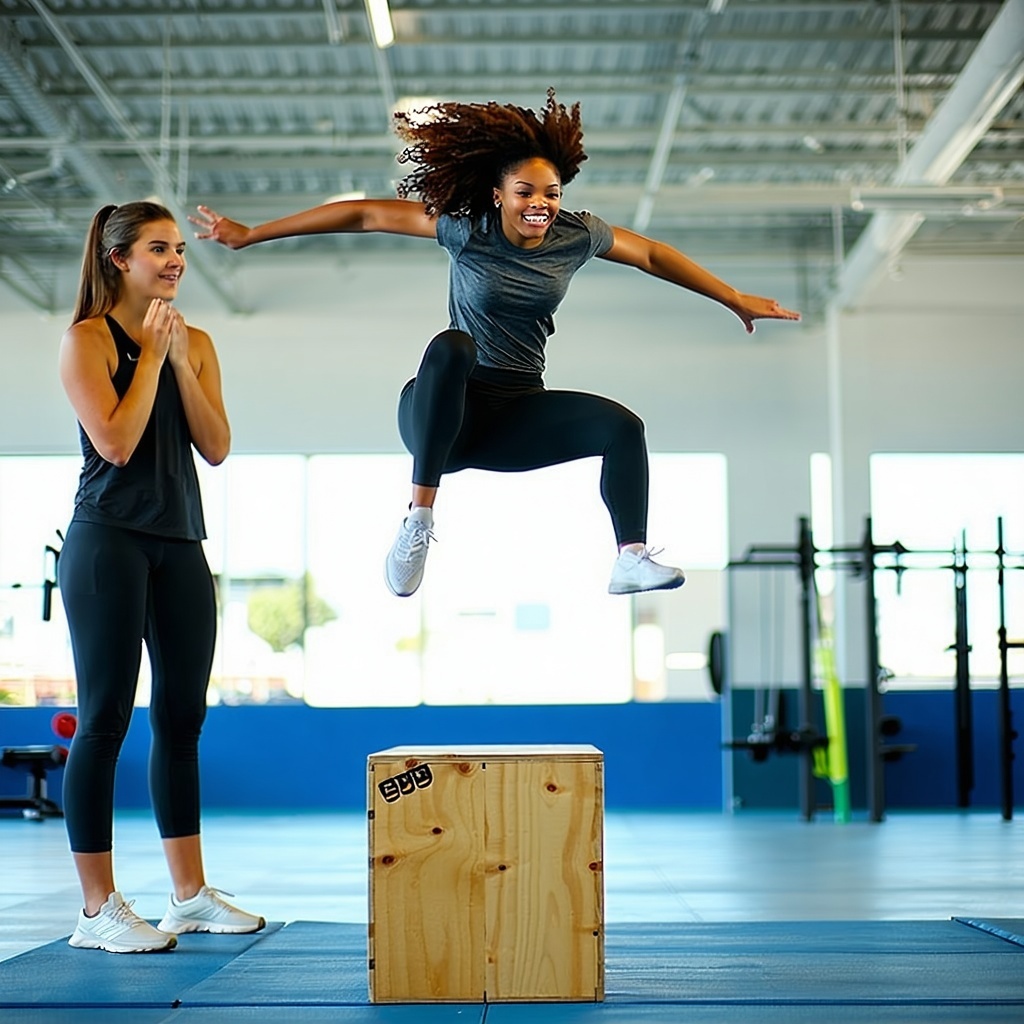Over in the corner of the gym, a young man in his early twenties has stacked up three hollow boxes with metal frames and a solid platform on top of each other. Each one of the three are slightly smaller and shorter than the one below but stacked, the top of the highest box is close to eye level for the young man now standing in front of the boxes breathing heavily. Two women filling their water bottles stop and stare with several others scattered throughout the weight room. As the young man begins to squat slowly and swing his arms back and forth there is a pause as the observers watch closely, already in disbelief of what they are about to witness. Like a flash the young man’s arms swing forward and he explodes upward and lands softly on the platform of the top box where he perches in a crouch momentarily before gingerly hopping down. The observers look at each other, shake their heads and resume their workouts.
Plyometrics have indeed bounced right out of the trainer/sports conditioning toolbox and into regular workouts for regular people. To appreciate plyometrics one need not launch into superhuman elite athletic feats like the one described above. Plyometrics can be an integral part of any exercise routine and the benefits are increased stability, dynamic strength and power. Here’s how it works: plyometrics involve two phases of movement, the first is a “negative” or slowing down of the body being lowered into a “cocked” position. The second is the “explosion” phase of the jump. The most simple plyometric move is a squat-jump and is performed just as it sounds, by squatting into the “cocked” position then jumping upward in an explosion. The depth of the squat and height of the jump are relative to the individual’s development, so even a small bit of air between the feet and ground counts. As with all types of exercise, increases in difficulty with plyometrics should be done gradually and only in sync with your individual strength and stability. General progressions with plyo work include higher jumps and using tools such as boxes for targeted jump height and greater amplitude.
Keep in mind that plyometrics sap energy fast so this type of activity should be done early in a workout so that fatigue from other exercises does not hinder your performance or elevate the risk of injury. A good rule of thumb with plyos is to stop as soon as fatigue (tired legs) is evident. Increased stability and power (greatest force in shortest time) are the primary benefits of plyometrics but there are other good side effects of fun, challenge and increased strength and reaction time. A quick check in with a Fitness Pro can provide more information and ways to work this type of exercise into your routine. Be well and jump high!


